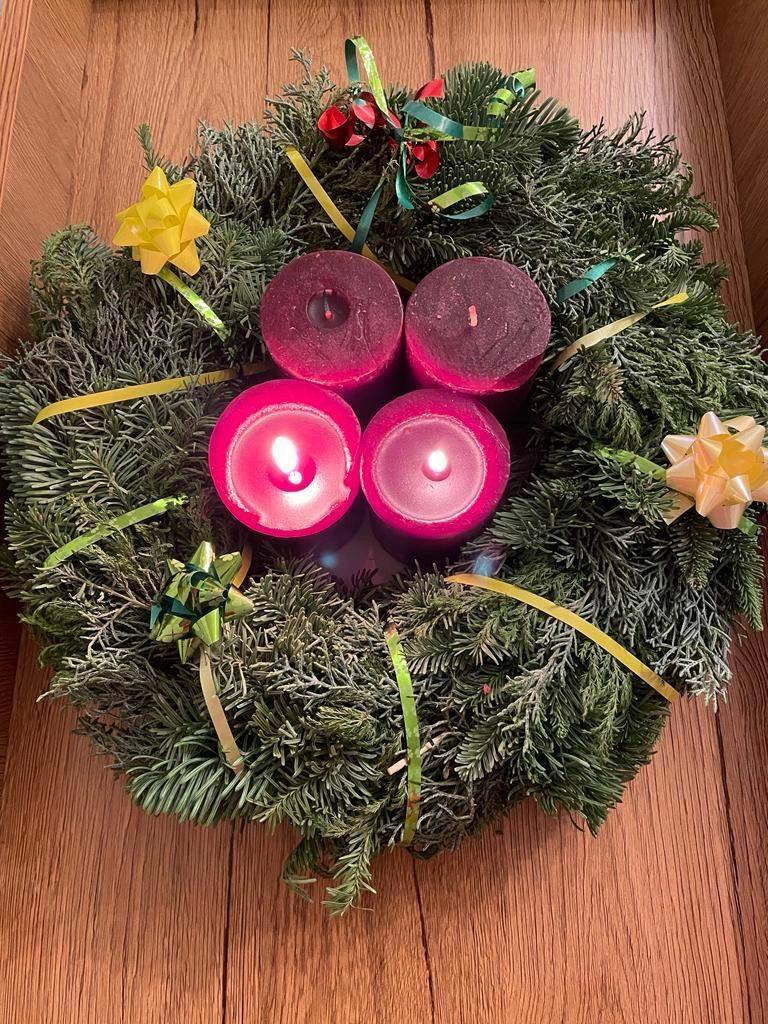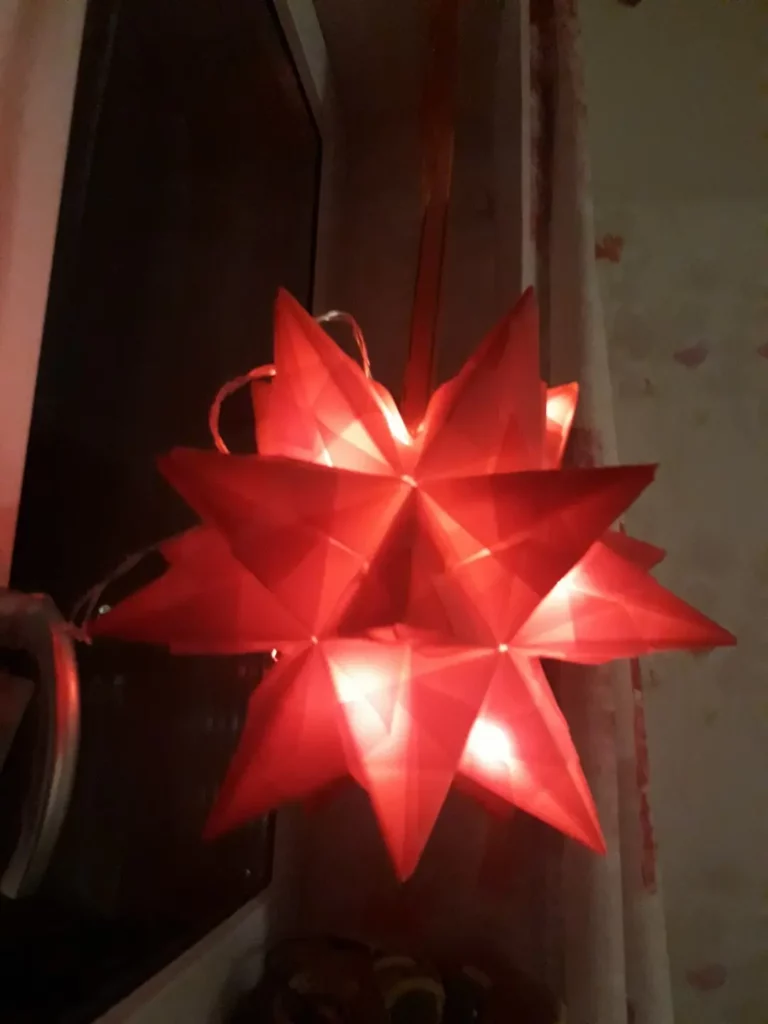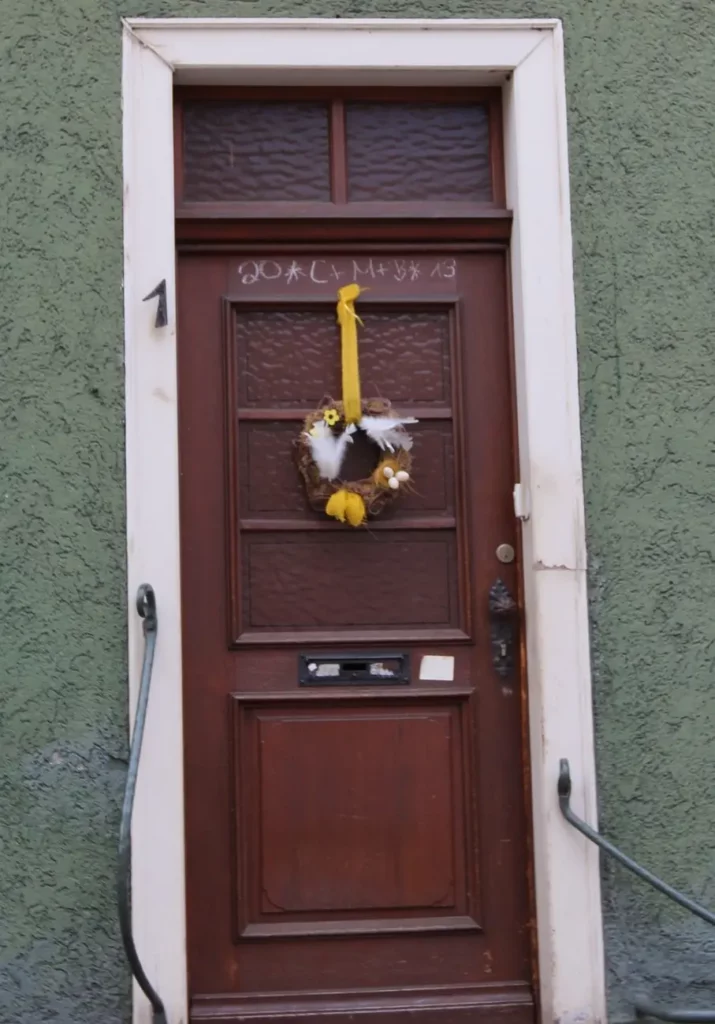Last Updated on January 19, 2023
Christmas in Europe is a special time. A Christmas market, trees and decorations, Christmas carols … But all this you find not on Christmas itself, but earlier – on Advent. From December 23 to January 27, Europe is not the best place to visit: just before Christmas, everyone completely empties the store shelves and lies at the bottom: long weekends, no one works, except gas station, Donners and a few restaurants. The interval between Christmas and New Year and after the New Year is the time of sales of old clothing collections. And immediately after January 6, the holidays are completely over: the lights and the trees are removed.
What is Wichteln
German holidays in April, May, Juny. Ostern, Maifest and Fronleichnam and others between
What is Besen?
Lanterns for Saint Martin festival
Carnival in Germany
Stumbling blocks
Simple Christmas decoration ideas
Bascetta star instructions
Advent
Advent (from the Latin adventus Domini – the arrival of the lord) begins 4 weeks before Christmas, always on Sunday evening.
Previously, this period was longer and began immediately after the feast of St. Martin. Then the believers had to fast on weekdays and a 40-day fast was obtained up to the feast of the Epiphany on January 6. In the 7th century, Advent time was shortened to 4 Sundays, although many parishes continued to adhere to the long version, which in the 11th century resulted in a decent-sized church dispute called the Strassbourg Advent dispute. Maybe that’s why Advent in Strasbourg is the most wonderful time? I have not seen a better option anywhere.
More about the feast of St. Martin
Advent begins the church year in Western churches. Special services and readings are held, believers must repent and fast. But we are, of course, more interested in customs.
What is Advent wreath
From mid-November, Christmas wreaths (Adventskranz) appear in stores.
They were invented in 1839 by the theologian and educator I.H. Wichern. He took children from poor families for upbringing. Since the beginning of December, the children have been waiting for Christmas and have been asking him all the time when it will be. Therefore, Wichern made a wreath out of the wheel, put four large candles on it, and between them small ones according to the number of ordinary days.
The modern wreath consists of only four large candles. Wreaths are sold mainly with special thick candles, although there are also smaller ones. On the first Sunday of Advent, the first candle is lit, on the second, the second, and so on.

What is Advent calender
The second constant attribute is the Christmas calendar (Adventskalender). They can be small or large, with chocolates, with books, with gifts, with opening doors, without doors, with pockets … The calendar is intended more for children, but many adults do not forget and about yourself or about adult loved ones, and even for pets there are calendars.
The first calendar appeared among German Protestants in the middle of the 19th century. – they hung a homemade calendar with religious pictures on the wall. In 1902, the first children’s calendar was printed.
Later they came up with the idea of taking out small pastries and chocolate from the calendar. In 1920, they began to make opening doors.
There is also such a form as a “live” calendar: a group of local residents, neighbors, friends or parishioners, come every Advent day to a certain house – tell Christmas stories or sing Christmas songs, talk, drink punch. In our region, I have not yet met this option.
Christmas stars
The Christmas star is one of the symbols of Christmas. It adorns the streets and houses as a reminder of the Star of Bethlehem from the beginning of Advent to the feast of St. Magi (January 6).
The star is a typical decoration for balconies and windows. Several forms of Christmas stars have been invented over time.
Here you can find detailed instructions on how to make a Bascetta star. The Aurellio star has a similar shape, but a slightly different assembly principle.
Another very common star form that is easier to buy than to make is the Herrnhuter Stern. This star was created in the town of Herrnhuter in Upper Lausitz in the 18th century among refugees from Moravia. It is called also a moravian star. A star has a different number of rays (the commercial standard version is 26 rays attached to a rhombocubooctahedron (Wiki will help you :)). A large star with 110 rays is also known.
Also from Saxony are Annaberger Faltstern (a star in a semi-folded form, which is sold flat and then opened in volumetric form), Original Hartensteiner Stern (this star also has rays attached to the base, like the Moravian one) and a very similar Original Haßlauer Stern.
Fröbelstern, which is made from strips of paper, is easy to make and very popular. The known German teacher Fröbel used this star for the development of motor skills and geometric thinking. The principle itself came from Sweden, where such stars were made even before the 18th century.

Follow me
Lichterbögen
Also on the windows you can often see a luminous arc (Lichterbögen). This custom came from the mining environment – in the winter months they were in the dark almost all the time. Initially, these were the miner’s lanterns, which were placed on the window when the miner came home. For Christians, light in the pre-Christmas period has a special meaning.

Christmas Markets in Germany
The Christmas markets begin at the beginning of Advent, the Friday preceding the first Sunday. In large cities they last almost until Christmas, in small cities they last two weeks or just one weekend.
All sorts of things are sold in the markets in wooden stands decorated with Christmas trees, deer and glowing garlands: New Year’s and simple toys, decorations, various oils, bags of lavender, pillows with unusual fillers (for example, cereals), woolen products, socks, hats and gloves, gourmet sausages and cheeses, traditional Christmas pastries … In most cases, prices are not the smallest, but there are original products that are difficult or impossible to find elsewhere.
Such markets are a meeting place for local residents; they hang out at tables with punch and mulled wine for a long time.
Don’t assume that once you’ve been to one market, you’ve learned all of them. Toys and decorations, food – they all differ from city to city. There are also themed markets such as medieval ones. You won’t find typical stands there at all.
My favorite market last time is in Ulm. Not too big and not too narrow, many original things.
In Nuremberg, one main square is packed with shops, so that there is overcrowding, which greatly reduces the pleasure. There are small “settlements” on other streets, but they are not enough, they need to be distributed from the square to the side streets. In Nuremberg, the center is large and it would be easy to do.
In Stuttgart, shops are distributed, but the selection itself is rather boring.
Santa Claus, Saint Nicholas, Weihnachtsmann and Christkind rush with gifts
In Germany, there is some confusion over who should bring gifts.
Initially, it was Saint Nikolaus (Saint Nicholas of Mirliki, the patron saint of not only sailors and travelers, but also children). His memory is celebrated on December 6, and on this day, since the Middle Ages, good children receive gifts. In Germany, he continues to come on December 6, and in most cases he brings something tasty with him – tangerines, nuts, sweets. He puts them in a sock or shoe, that was put in front of the door on the evening of December 5th.
St. Nikolaus can be accompanied by Knecht Rupert – a servant with rods for disobedient children.
Addresses for letters to St. Nikolaus
Nikolaus
66352 St. NikolausAn den Nikolaus
49681 Nikolausdorf
After the Reformation, Saint Nicholas gave way to the Christkind because the Protestants did not accept Catholic saints. He is depicted as an angel bringing gifts on Christmas night. Like Santa Claus, you can send a letter to him in Germany. To get an answer, you must write a letter in advance – it must arrive at least a few days before Christmas (a week – Himmelstadt, 10 days – Himmelpforten, 3 days – Engelskirchen).
Addresses Christkind:
In Germany
Christkind,
Kirchplatz 3,
97267 HimmelstadtAn das Christkind
21709 Himmelpforten
An das Christkind
51777 Engelskirchen
In Austria
Postamt Christkindl
Christkindlweg 6
A-4411 Christkindl
In Switzerland
An das Christkind
9405 Wienacht-TobelAn das Christkind
3027 Bethlehem
However, TV and Hollywood movies are inevitable, and Christkind is likely to become a thing of the past. Now he neighbors in our region with Santa Claus, but the latter (he is called here Weihnachtsmann – literally, the “Christmas man”) clearly prevails.
Weihnachtsmann addresses in Germany
An den Weihnachtsmann
Weihnachtspostfiliale
16798 HimmelpfortAn den Weihnachtsmann
Himmelsthür,
31137 Hildesheim
Christmas and New Year in Germany
Christmas (Weihnachten) in Germany is purely a family holiday. Many go to church on the evening of December 24 (Heiligabend). Once we also went: if in France it was unity and joy, then here it is rather a solemn sermon.
Read more, why Weihnachten is so called.
Gifts are traditionally given on Christmas Eve too. But this is not some kind of rule, each family has its own traditions.
Most often Germans eat potato salad with sausages, duck or goose, raclette, fondue or carp on Christmas Eve.
New Year (Sylvester), on the contrary, is not a family holiday. Friends gather at it more often. The main component is the madness of fireworks, which do not appear on sale until January 29th. The number of them is such that it already harms the process itself – there is usually so much smoke that you can no longer see anything.
Drei Könige day (Fest of three Magic Kings)
Day of three Magic King (or Three Magi, or Three Wise Men) is celebrated on January 6 in the Catholic federal states, where it is official fest and holiday.
Unlike Spain, in Germany no one is given gifts for this holiday – this is the day when they give, not receive. On January 6, very large sums are collected for charity. Usually, various Christian organizations gather. This is made by Sternsinger – young people and children, that are dressed as magi, go from door to door and sing.
In recent years, simply going from door to door is not encouraged: usually those who wish to be visited are registered in special books in the church.
Sternsinger receive a donation and write symbols on the doors that have double decoding. First, it is an abbreviation of the names: Caspar, Melchior and Balthasar. Secondly, it stands for Christus mansionem benedicat (Christ, bless this house)

To be continued: visit the Christmas markets (if possible), bake Christmas pastries …
Read more about Christmas cookies.
All topics about holidays in Germany – #culture
Do you enjoy the site without cookies and maybe without ads? This means that I work for you at my own expense.
Perhaps you would like to support my work here.
Or Cookie settings change: round sign bottom left

